
“If Darwinian style evolution happens or doesn’t happen, it happens or doesn’t happen genetically.” 1
SEAN PITMAN


Ben
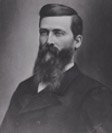
James
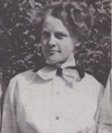
Charlene

Warren

Lynn

Tiffany

Teagan
Darwin looked for evidence supporting his conjectures in all the wrong places. The fossil record didn’t oblige. Nineteenth-century scientists dismissed living cells as “structureless globules of protoplasm.”
Darwin had no clue a cell had a nucleus. His awareness of DNA was nonexistent. He had no conception that evolution either “happens or doesn’t happen genetically.”
“DNA contains the genetic blueprint of life…It gives instructions to the rest of the cell to make proteins, and it passes this same information on to the next generation…Without DNA, living organisms cannot survive.2
Long after death of a human, DNA residue can be found in the teeth.
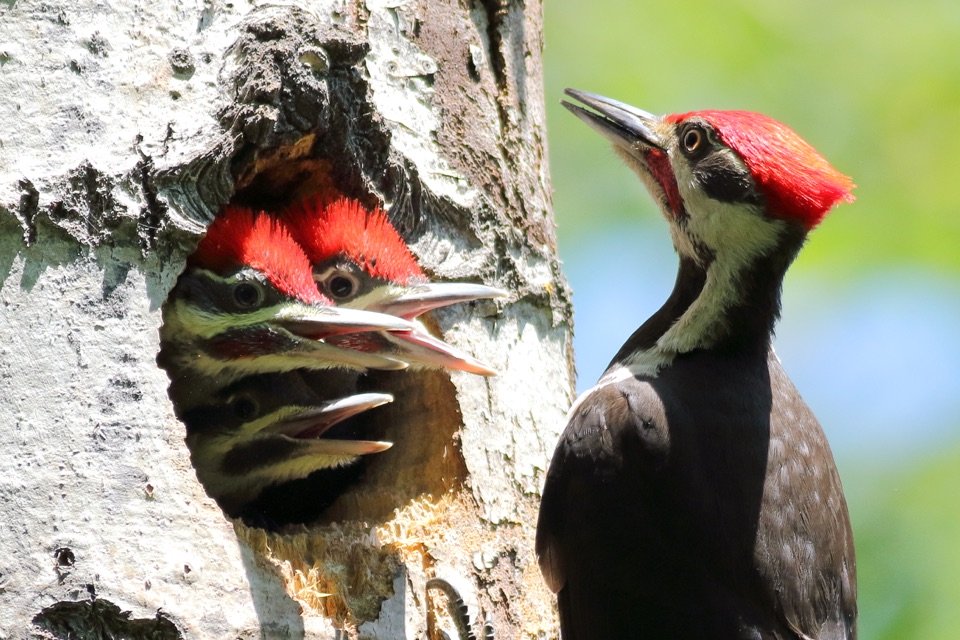 © Mike Norkum
© Mike Norkum
Laws of math, physics and the atomic composition of chemical elements, don’t change or evolve. Mutated genes may degrade the genome but don’t create new genetic information. DNA doesn’t evolve.
A single gene’s DNA information can no more be created by chance than medieval alchemists could make gold by mixing recipes of other elements while relying upon abracadabra magic.
So where did a cell’s information come from?
An unused computer disk offers a blank screen until some human intelligence delivers a digital code loaded with text or pictures. An electronic data bank lacks meaning or purpose without deposit of a precisely coded message put in place by some intelligent source.
Once loaded, the coded message can be replicated ad infinitum.
DNA may become corrupted, but the basic information package, built into the original genome of every plant and animal, guarantees descendant generations will replicate the unique living organisms of ancestor parents. Mutations degrade DNA, never adding new genetic information.
The genome’s certitude for every plant and animal reflects a chain of perpetuity unbroken and unimpeded by evolution theory. The life expectancy of a known species is terminal. While the matter composing a life form may turn to dust, the original parent generation’s DNA lives on, dictating design in descendant generations.
Try playing a card game by shuffling a deck of blank cuts of white cardboard, lacking numbers or distinctive graphic prints. No winners, no losers, no game–just a meaningless shuffle of nothingness.
An attractive cover that binds a package of blank white paper would never top a best-seller list. It’s the printed message that sells a book. Matter, without information, exists in the abstract. Unproven theory, without supporting evidentiary data, epitomizes intellectual incoherence.
First graders, up to their ears in ABC’s, recognize 26 letters in the English alphabet. Kids learn to spell “cat” and “dog.” By the time they reach high school, they have discovered the English language boasts a plethora of mind-bending combos of those 26 symbols—a vocabulary of significantly more than the most familiar 200,000 English words with a capacity to communicate information on an encyclopedic scale. Impressive capacity, but not close to matching information combos powering the “Language of Life.”
Monarch butterflies summer in North America and then trek south annually, 2,000 miles to Mexico’s warmth. Clouds of burnished gold wings, bound for their southland “resort,” float at a gentle ten miles per hour, typically covering fifty miles per day. Monarchs find the identical winter home each year thanks to their own built-in GPS. The year long round-trip involves five generations—four that live only a month or so while the stalwarts that navigate the migration route to Mexico live nine months.
Non-living, inorganic chemicals exist in the form of 100 plus known elements. The quantity of protons contained in the nucleus of an atom gives each element its distinguishing number. Ten years after Darwin floated his ideas, Russian chemist Dmitri Mendeleev arranged the 63 then-known elements in a chart of rows and columns dubbed a Periodic Table of the Chemical Elements. The chart confirms chemistry’s intrinsic organization. Chemical recipes created from molecular mixes of these elements produce products underwriting industry.
Living cells contain definitive information blueprints, distinctive DNA codes for every plant and animal species inhabiting earth. DNA’s coded information dictates gene function with a certitude reminiscent of The Periodic Table’s inorganic elements.
The predictable results of hybridization and gene splicing contradict even the most remote possibility of the chance hypothesis. “What has been revealed as a result of the sequential comparisons of homologous proteins is an order as emphatic as that of the periodic table. Yet in the face of this extraordinary discovery the biological community seems content to offer explanations which are no more than apologetic tautologies.” 3
Michael Denton’s Evolution: A Theory in Crises, opened the door to a glimpse of molecular biology’s avalanche of insight. “Neither of the two fundamental axioms” of neo Darwinism,“…continuity of nature…linking all species together and ultimately leading back to a primeval cell” and “adaptive design…from a blind random process have been validated by one single empirical discovery or scientific advance since 1859.” 4
Even had spontaneous generation defied impossible odds by accidentally creating a “simple,” living cell, it couldn’t survive much less reproduce itself, without its own package of DNA calling the shots.
Once the assumption virus invades reasoning, superstitious nonsense follows. With or without popular acclamation, assumption masquerading as science doesn’t evolve fact. It’s futile folly to contend a cell’s information code originated spontaneously from inert matter.
DNA exists sui generis (one of a kind). Multiple protein families provide an array of potential building blocks for specific living formats.
Just where did that genetic information originate?
Logic slinks out science’s back door when the “design inference” is ignored. Microscopic genetic information codes every cell of every living organism with a one-of-a-kind mark.
Tucked into the cell’s nucleus are the strands of deoxyribonucleic acid (DNA) containing the code of life for every organism. This compendium of living data is so miniscule that it can’t be seen by unassisted human sight. Organic life could not exist without an information blueprint housed in every living cell. DNA contains the master genetic blueprint for every living organism with precision reminiscent of inorganic chemistry’s Periodic Table of the Elements. “Without DNA, living organisms cannot survive.” 2
It’s less than rational, and certainly unscientific, to suggest DNA’s microscopic strings of pre-coded information appeared accidentally after millions of years of chaotic heating, cooling, and thawing mingled with nature’s torrents of rain, lightning flashes, and sporadic gusts of wind.
Every prototype plant and animal life on earth carries a staggering stash of unique genetic information locked in place from the get-go. The first living cell could not exist without its own, DNA-imprinted language system—in place and fully functioning from the instant it joined earth’s ecosystem.
A meticulous DNA code for the design of every kind of life was activated in the beginning. Even in corrupted form, this unique language of life is passed along to successive generations. While matter composing the format of every life kind disintegrates at death, returning inert chemicals to the earth, DNA data banks live on, guaranteeing kaleidoscopic diversity in descendant generations but never radical change to entirely new and different organisms.
“It is so efficient that all the information needed to specify an organism as complex as man weighs less than a few thousand millionths of a gram…Each gene is a sequence of DNA about one thousand nucleotides long.” 5
These ladder-like spirals are built on side rails with alternating molecules of phosphate and deoxyribose “held together by ‘rungs’ called nucleotides (or bases) consisting of four specific chemical molecules: thymine (T), adenine (A), cytosine (C) and guanine (G)…Millions upon millions of nucleotides are known to exist in the nuclear DNA structure of living cells.” 6 Living organisms use these same nucleotides but in different formats just as cars and skyscrapers use steel with different designs and purposes.
Nucleotides A and T bond together to form an AT or a TA base while G and C bond as GC or CG.
“A always bonds to T and the base letter G always bonds to C. Three contiguous letters on the DNA molecule (called a codon) instruct the cell to place one particular amino acid into a protein chain…RNA carries this template of the DNA and assembles proteins by attaching amino acids together in a chain.” 7
“Nucleotides cannot be added at will; even if they did, they could not align themselves in a meaningful sequence….any physical change of any size, shape, or form, is strictly the result of purposeful alignment of billions of nucleotides. Nature or species do not have the capacity of rearranging them nor to \add them.” 8
Sir Fred Hoyle scoffed at the concept of a genetic code emerging from some primordial organic soup by chance, dismissing it as “nonsense of a high order.” 9
The genome’s complexity and DNA source defies science. Denial of DNA design, put in place at the command of an infinite intelligence, conjures up images of superstitious ancients, worshiping at the feet of inert matter, bowing in supplication before the sun or homemade idols of wood and stone.
The first cell’s DNA base pair could not exist without imprinted language of life instructions. A single cell’s DNA comes loaded with information sufficient to fill 3,000 sets of printed encyclopedias.
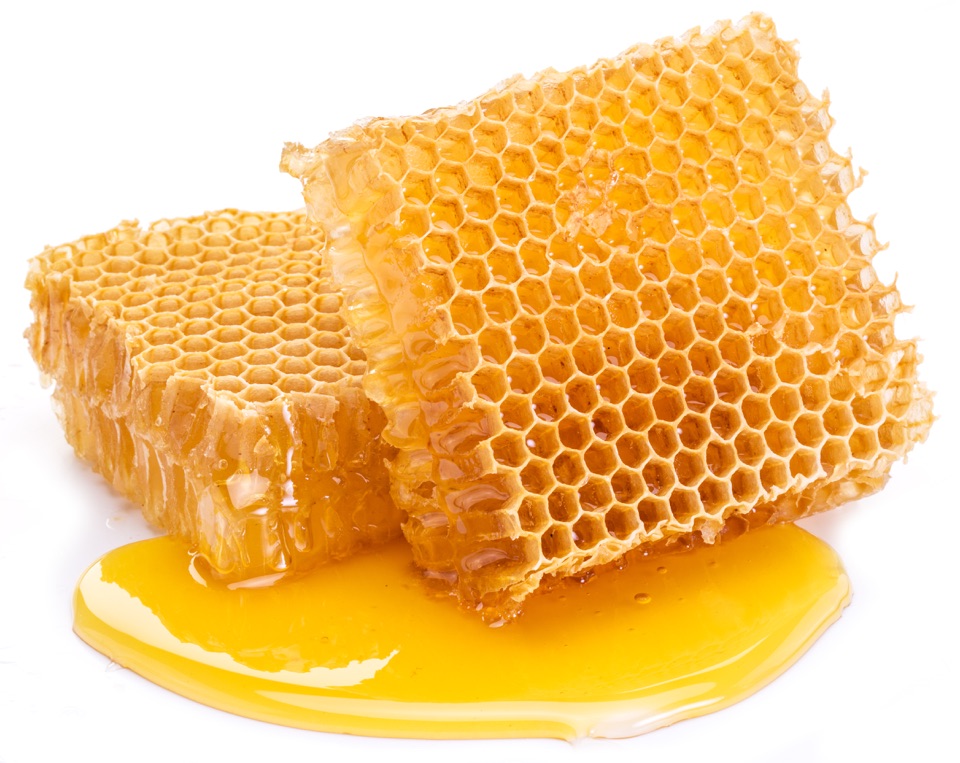
© Valentyn Volkov
The hexagonal honeycomb design in a beehive utilizes a minimal amount of wax to store a maximum amount of honey.
No single honeybee builds a honeycomb—it takes a colony!
Consecutive rows of precisely matching hexagonal cells are replicated without mechanical tools or measurement by an independent architect. The swarm of worker bees perform the elaborate construction dance in virtual darkness. They fly in raw material collected from multiple sources to create the wax to build the cells. They then manufacture the honey from more flown in material to fill the cells to be capped with more wax. The process provides pollination for plants.
Uncompensated honeybees perform this service routinely for the benefit of the animal and plant kingdoms, generation after generation, without formal education, guided primarily by built-in DNA instructions.
A dragonfly sees through two eyes, each with 30,000 lenses. The bee gets by with 6,300. Bird feathers reflect a rainbow of colors adding symmetric beauty to a bird’s aerodynamic flying combined with temperature control. A microscope exposes the complexity of a single human hair.
Potato bug eggs hatch in 7 days; canaries require 14; hen’s eggs take 21 days; ducks and geese require 28; mallard ducks take 35; while 42 marks the timeline for the parrot and the ostrich. 10
An elephant’s four legs bend forward at the knees easing its rise to an upright position. In contrast, a horse first uses its front legs to stand while a cow starts with its hind legs.
Genes dictate the difference.
Watermelons have an even number of stripes on the rind; oranges have an even number of segments; an ear of corn carries an even number of rows; and a stalk of wheat has an even number of grains.
And then there are banana bunches, with an even number of bananas on the lowest row, with each subsequent row decreasing by one, resulting in alternating even/odd rows for the bunch. 10
Stag deer grow racks of antlers courtesy of gene code information. Thanks to distinctly unique genetic information, humans don’t sprout horns on their heads and deer don’t evolve tear ducts on their feet.
Human genes design lachrymal glands essential to moisten eyes. Two human ears provide the luxury of classic stereo, detecting direction of the sound’s source. An ear’s cartilage is designed to maximize sound capture in a shape complimentary to the appearance of the face.
Unseen DNA puts the complete living package together in nine months.
The individual master code that dictates eye color, sex, and the shape of the face is typically one-of-a-kind. Just as fingerprints identify patterns belonging to a single person, every body cell portrays the DNA sequence of a genome, unlikely to be precisely identical with that of another human.
DNA not only revolutionized investigation of life’s origin but also emerged as a tool of the judicial system, shining light on crime detection and resolution. When DNA doesn’t match crime scene evidence, convictions have been overturned, sometimes years after the fact.
“The capacity of DNA to store information vastly exceeds that of any other known system; it is so efficient that all the information needed to specify an organism as complex as man weighs less than a few thousand millionths of a gram…Each gene is a sequence of DNA about one thousand nucleotides long.” 5
Internet entrepreneur Bill Gates recognizes the limits of cyberspace language in contrast to the cell’s ability to store and utilize living data.
“DNA is like a computer program but far more advanced than any software we’ve ever created.” 11 It’s been calculated that if “…all the copies of the DNA in all the cells of your body were straightened and laid end-to-end they would be about 50 billion kilometers long” 12 and would stretch from the earth to beyond the solar system.
Did the 50 billion kilometer length of microscopic strands of human DNA result from mega-millions of luck-of-the-draw mutations? Seriously?
Multiply nothingness by billions and the answer remains a vacuous zip.
“DNA and RNA molecules do not form spontaneously or abiotically in any ‘primordial earth’ type experiment…” 13 Ribonucleic acid (RNA) acts as DNA’s transfer agent taking the code from the nucleus to the cytoplasm. Its never been demonstrated that either DNA or RNA components of a cell can evolve spontaneously from non-living matter.
With a single rail composed of phosphate and ribose molecules and rungs with uracil (U) instead of thymine (T), messenger RNA enters the nucleus at a moment when the DNA unwinds, reads and copies the information then delivers the code to a ribosome protein-producing factory. “The order of dRNTs of DNA determines its information content, provided that the rest of the cell’s machinery is present.” This refers to the “complex apparatus which duplicates DNA, transcribes it to a readable message and then reads the message and produces a functioning protein…” 14
Not all genetic data resides in the cell’s nucleus. “…Mitochondria have their own DNA/RNA structure…a semi-independent order-giver in its own right, a computer sub-station so to speak…Human mitochondrial DNA has slightly more than 16 thousand nucleotides.” 15
If this infinitesimal information resource were placed in a teaspoon, together with DNA “necessary to specify the design” for all species of living organisms ever to have lived on Planet Earth, “there would still be room left for all the information in every book ever written.” 16
Evolution’s “RNA World Hypothesis” posits that RNA might have generated the evolution of a complete cell because it carries information and serves also as a catalyst for the manufacture of a cell’s protein. This hypothesis is a dubious entry in the sweepstakes of the make-believe.
Attempting to explain the origin of first life by accident, the idea credits “11 small carbon molecules…that could have played a role in other chemical reactions that led to the development of such biomolecules as amino acids, lipids, sugars, and eventually some kind of genetic molecule such as RNA.” 17
Little did those infinitesimal “molecules” comprehend the magnitude of the creative authority theoretically vested in their atomic composition.
The language of life can’t exist without proteins, and proteins can’t exist without the molecule that provides and stores instructional information. RNA cannot survive on its own without being an essential part of the complete living organism—nor can it account for the source of its original genetic information. DNA, RNA, proteins, amino acids, and cell membranes exist as a composite, mutually interdependent, living whole.
Its an all-or-nothing, package deal.
Its axiomatic that a functional cell requires a precise dose of genetic directions to tell its amino acids and proteins just how to function as a one-of-a-kind, reproducing organism.
The genomes of different species show vast differences that defy bridging by simply reshuffling the card deck and re-dealing the identical genetic information. Any change is limited to the potential combinations of the original 52 cards in the deck unless new cards with entirely new and different information are added to the mix.
The genome of a chimpanzee doesn’t match the genome of a human. Nor is there a whit of evidence that an elephant, a giraffe, a butterfly, or a giant Sequoia could have descended from a common ancestor. Amino acids don’t organize themselves without a genetic code orchestrating the process.
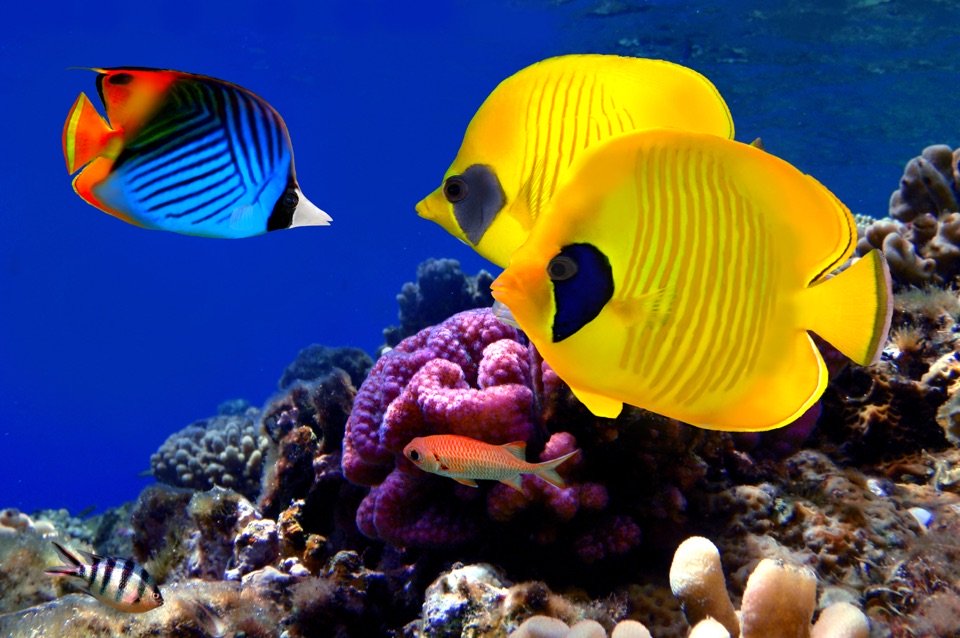
Shutterstock
Mutated DNA degrades the genome, never creating new, genetic information. No evidence indicates descendants of fish ever evolved up the genomic ladder to a different Family, Order or Class.
Dean Overman discounts “biochemical predestination” in molecular genetics. “The enormous information content of even the simplest living systems…cannot in our view be generated by what are often called ‘natural’ processes…
“For life to have originated on the Earth it would be necessary that quite explicit instruction should have been provided for its assembly…There is no way in which we can expect to avoid the need for information, no way in which we can simply get by with a bigger and better organic soup…” 18
It’s intellectually incoherent to assert life and its built-in code of information appeared spontaneously, by chance, independent of intelligent cause. Like the machine with the sole function of turning itself off, human minds have proposed the inherently impossible–the creation of intelligent information from a non-intelligent source—by coincidence, no less!
“…Since most proteins are, on average, 300 amino acids long, the DNA needed to make just one protein would have to be approximately 900 letters long.” And since the first living organism would have required 20 or so basic proteins to function, each with 900 letters of DNA, “…18,000 letters of DNA would be needed to theoretically form the first single-cell organism.” 19
Now factor in the length mandate.
“Scientists have observed DNA strands forming naturally in the laboratory, but only in strands of up to 20 letters in length…After 20 letters of DNA come together, the DNA begins to break apart.
“Simply put, long strands of DNA (hundreds of tens of thousands of letters long) do not form naturally because chemical properties of DNA prevent this.” 20
Then there’s the required sequence pattern.
“The 18,000 DNA letters have to be lined up in a particular order to call for particular amino acids in a particular set of proteins for life to begin…The odds of winning the national Powerball Lottery every day for 365 days are 1/4,244 followed by 2,881 zeros…
“The chances of DNA forming spontaneously with the proper letter sequence” requires 10,837 zeros.21 Calculating the odds requires recognition of the number of genes to be reckoned with.
Mycoplasma genitalium, with its 482 genes and 580,000 bases, may be the “simplest known self-reproducing life form.” 22 The genome of a mammal contains a string of “from two to four million” symbols ”…that would fill two thousand volumes—enough to take up a library shelf the length of a football field. All this is in the tiny chromosomes of each cell.” 23
Based on mathematical probability factors alone, “…any viable DNA strand having over 84 nucleotides cannot be the result of haphazard mutations. At that stage, the probabilities are 1 in 4.80 x 1050…
“Mathematicians agree that any requisite number beyond 1050 has, statistically, a zero probability of occurrence…
“Any species known to us, including the smallest single-cell bacteria, have enormously larger numbers of nucleotides than 100 or 1000…This means, that there is no mathematical probability whatever for any known species to have been the product of a random occurrence—random mutations…” 24
However contrived the calculation, impossible still spells impossible!
The mathematical odds against the process occurring accidentally, push computations over the edge. The already impossible eventually confronts the ultimate challenge of merging millions of cells into a cohesive living unit composed of a functioning conglomerate of tissues, organs, and systems.
“…The DNA molecule may be the one and only perfect solution to the twin problems of information storage and duplication for self-replicating automata…
“It is astonishing…that this remarkable piece of machinery which possesses the ultimate capacity to construct every living thing that ever existed on Earth, from a giant redwood to the human brain, can construct all its own components in a matter of minutes and weigh less than 10-16 grams. This “…is of the order of several thousand million-million times smaller than the smallest piece of functional machinery ever constructed by man.” 25
“The difference in DNA between species resides almost strictly in the sequential positioning of the nucleotide…No two individual plants or animals have DNA spirals that are identical…” 26
“Bacterial genomes are very different from eukaryotic genomes [Bacteria are Prokaryotes, single-cell life forms with an open internal cell structure while Eukaryotes, also single celled, occupy multiple compartments] in that they usually do not possess ‘exons’ and ‘introns’ and do not have extensive scaffolding. Bacteria even lack membranebound nuclei, so that their genes can be expressed much more quickly than those of the eukaryotes…” 27
“…Pure unguided random events cannot achieve any sort of interesting, or complex end…The fact remains that nature has not been reduced to the continuum that the Darwinian model demands, nor has the credibility of chance as the creative agent of life been secured.” 28
To qualify as anything more than a “fairy tale for grown-ups,” evolution theory needs confirmation at the molecular level. A congenitally flawed idea crafted from ambiguous abstraction lacks substance. Molecular biology does nothing to demonstrate the genetic continuity critical to the corroboration of evolution theory—but it does confirm discontinuity.
“At a molecular level…there is no trace of the evolutionary transition from fish to amphibian to reptile to mammal. So amphibia, always traditionally considered intermediate between fish and the other terrestrial vertebrates, are in molecular terms as far from fish as any group of reptiles or mammals.” 29
Primitive minds, tainted by superstition, studied what they could see—embryos and bones. Without access to the all-seeing eye of the electron microscope, similar appearances could be misinterpreted as relatedness. The world might have been spared a library of specious speculations had molecular biology emerged as a nineteenth-century science.
Its universally recognized “…physical growth is the result of a very specific sequence of hundreds of thousands of nucleotides in its own DNA” which dictates the order giving sequence that “seeps down to the growth mechanisms. It never acts in the reverse direction…” 30
Lacking evidence of a convincing pattern of transitional life forms after millions of fossil discoveries, evolution theory lives or dies in DNA’s molecular world. The electron microscope doesn’t oblige!
So, back to the drawing board; just where did that DNA information stashed in DNA originate? Certainly DNA didn’t creep into the world playing roulette with nature’s chemistry set.
Michael Denton confirms the inability of chance to produce change necessary to close the massive gaps existing at the molecular level. “No evolutionary biologist has ever produced any quantitative proof that the designs of nature are in fact within the reach of chance…It is surely a little premature to claim that random processes could have assembled mosquitoes and elephants when we still have to determine the actual probability of the discovery by chance of one single functional protein molecule.” 31
Evolution’s devalued life concept exists exclusively on paper. Little else remains for the fragments of Darwin’s dream but an overdue eulogy. The core question deserves repetition: just where did the information, pre-loaded into the cell’s DNA, come from?
Objectivity directs the intellect to a design inference answer! In a futile quest for missing transitional forms, evolutionary theory has lost its academic battle in fossil cemetery fields and molecular biology labs. Instead of offering salvation for a decrepit idea, molecular discontinuity is writing the theory’s overdue obituary. Early in the 20th century, evolution’s futile formula was passed along to mutations in a last effort to salvage Darwin’s flawed fiction.
DNA discovery has opened the door a slight crack into the understanding of natural science. As it swings farther ajar, evolution’s interpretation of life will continue to shrink under the glaring spotlight of new insights.
DNA guarantees replication; DNA destroys evolution!
Antony Flew, once one of the world’s foremost atheistic philosophers, has observed: “The only satisfactory explanation for the origin of such ‘end-directed, self-replicating’ life as we see on earth is an infinitely intelligent Mind” 32
WLJ
© 2023 Warren L. Johns. All Rights Reserved.
Genesis File is an educational website.
While not a format for debate, the Editor welcomes all good faith contacts.